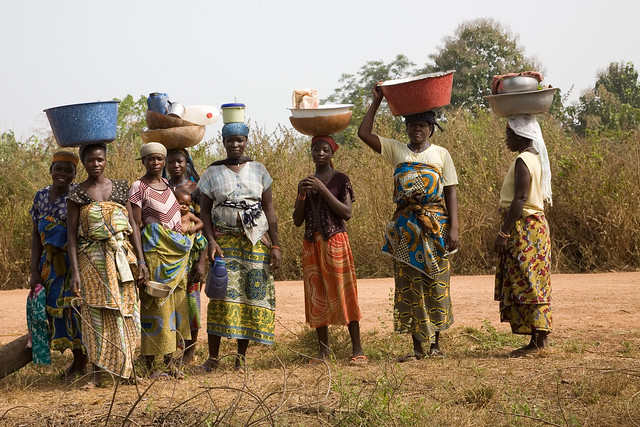Can we feed the world in the 21st century?
In a recent speech, Stanford professor Rosamond Naylor examined the wide range of challenges contributing to global food insecurity, which Naylor defined as a lack of plentiful, nutritious and affordable food. Naylor's lecture, titled "Feeding the World in the 21st Century," was part of the quarterly Earth Matters series sponsored by Stanford Continuing Studies and the Stanford School of Earth Sciences. Naylor, a professor of Environmental Earth System Science and director of the Center on Food Security and the Environment at Stanford, is also a professor (by courtesy) of Economics, and the William Wrigley Senior Fellow at the Freeman Spogli Institute for International Studies and the Stanford Woods Institute for the Environment.
"One billion people go to bed day in and day out with chronic hunger," said Naylor. The problem of food insecurity, she explained, goes far beyond food supply. "We produce enough calories, just with cereal crops alone, to feed everyone on the planet," she said. Rather, food insecurity arises from a complex and interactive set of factors including poverty, malnutrition, disease, conflict, poor governance and volatile prices. Food supply depends on limited natural resources including water and energy, and food accessibility depends on government policies about land rights, biofuels, and food subsidies. Often, said Naylor, food policies in one country can impact food security in other parts of the world. Solutions to global hunger must account for this complexity, and for the "evolving" nature of food security.
As an example of this evolution, Naylor pointed to the success of China and India in reducing hunger rates from 70 percent to 15 percent within a single generation. Economic growth was key, as was the "Green Revolution," a series of advances in plant breeding, irrigation and agricultural technology that led to a doubling of global cereal crop production between 1970 and 2010. But Naylor warned that the success of the Green Revolution can lead to complacency about present-day food security challenges. China, for example, sharply reduced hunger as it underwent rapid economic growth, but now faces what Naylor described as a "second food security challenge" of micronutrient deficiency. Anemia, which is caused by a lack of dietary iron and which Naylor said is common in many rural areas of China, can permanently damage children's cognitive development and school performance, and eventually impede a country’s economic growth.
Hunger knows no boundaries
Although hunger is more prevalent in the developing world, food insecurity knows no geographic boundaries, said Naylor. Every country, including wealthy economies like the United States, struggles with problems of food availability, access, and nutrition. "Rather than think of this as 'their problem' that we don't need to deal with, really it's our problem too," Naylor said.
She pointed out that one in five children in the United States is chronically hungry, and 50 million Americans receive government food assistance. Many more millions go to soup kitchens every night, she added. "We are in a precarious position with our own food security, with big implications for public health and educational attainment," Naylor said. A major paradox of the United States' food security challenge is that hunger increasingly coexists with obesity. For the poorest Americans, cheap food offers abundant calories but low nutritional value. To improve the health and food security of millions of Americans, "linking policy in a way that can enhance the incomes of the poorest is really important, and it's the hard part,” she said.” It's not easy to fix the inequality issue."
Success stories
When asked whether there were any "easy" decisions that the global community can agree to, Naylor responded, "What we need to do for a lot of these issues is pretty clear, but how we get after it is not always agreed upon." She added, "But I think we've seen quite a few success stories," including the growing research on climate resilient crops, new scientific tools such as plant genetics, improved modeling techniques for water and irrigation systems, and better knowledge about how to use fertilizer more efficiently. She also said that the growing body of agriculture-focused climate research was encouraging, and that Stanford is a leader on this front.
Naylor is the editor and co-author of The Evolving Sphere of Food Security, a new book from Oxford University Press. The book features a team of 19 faculty authors from 5 Stanford schools including Earth science, economics, law, engineering, medicine, political science, international relations, and biology. The all-Stanford lineup was intentional, Naylor said, because the university is committed to interdisciplinary research that addresses complex global issues like food security, and because "agriculture is incredibly dominated by policy, and Stanford has a long history of dealing with some of these policy elements. This is the glue that enables us to answer really challenging questions."

